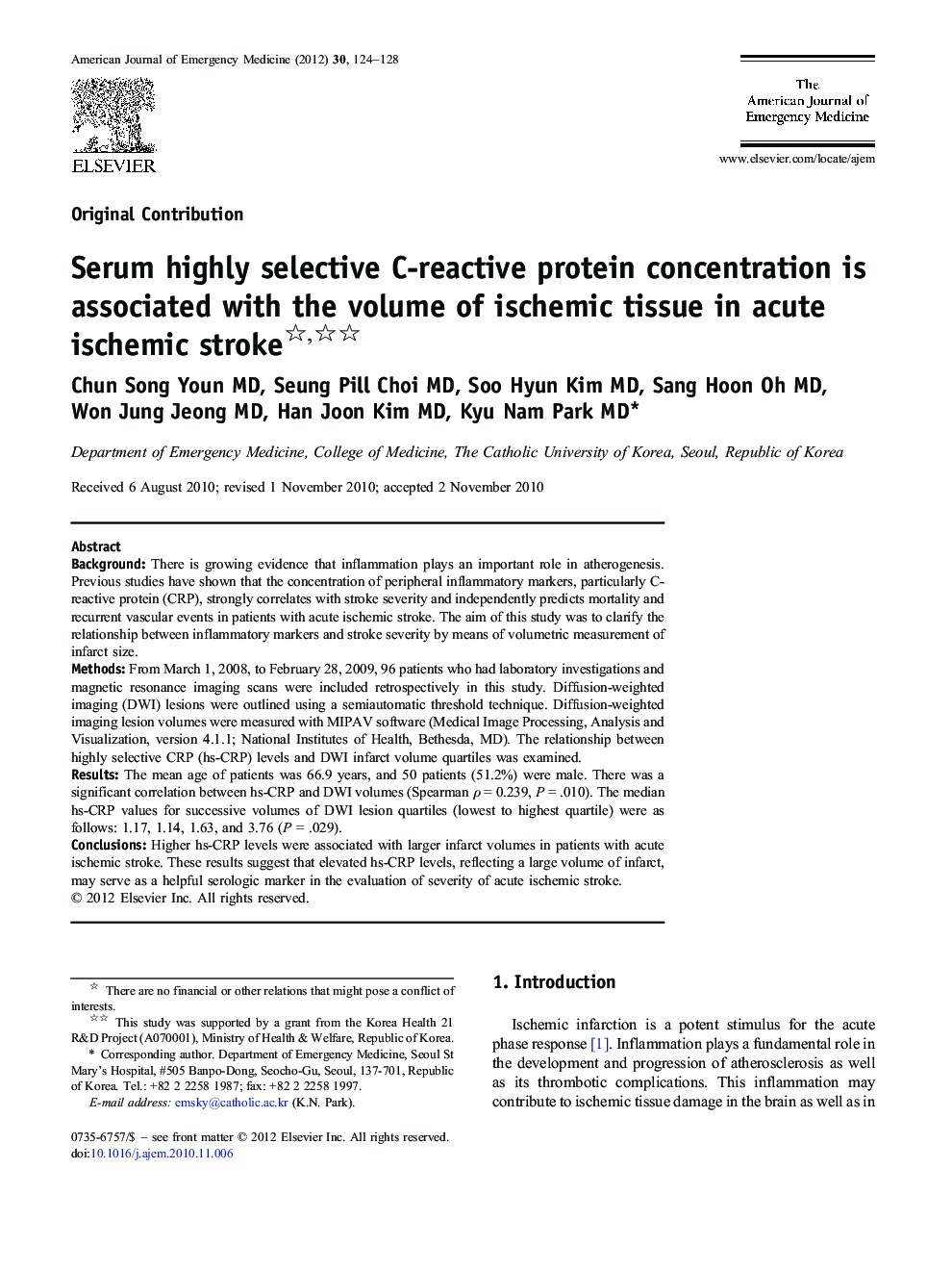| Article ID | Journal | Published Year | Pages | File Type |
|---|---|---|---|---|
| 3225757 | The American Journal of Emergency Medicine | 2012 | 5 Pages |
BackgroundThere is growing evidence that inflammation plays an important role in atherogenesis. Previous studies have shown that the concentration of peripheral inflammatory markers, particularly C-reactive protein (CRP), strongly correlates with stroke severity and independently predicts mortality and recurrent vascular events in patients with acute ischemic stroke. The aim of this study was to clarify the relationship between inflammatory markers and stroke severity by means of volumetric measurement of infarct size.MethodsFrom March 1, 2008, to February 28, 2009, 96 patients who had laboratory investigations and magnetic resonance imaging scans were included retrospectively in this study. Diffusion-weighted imaging (DWI) lesions were outlined using a semiautomatic threshold technique. Diffusion-weighted imaging lesion volumes were measured with MIPAV software (Medical Image Processing, Analysis and Visualization, version 4.1.1; National Institutes of Health, Bethesda, MD). The relationship between highly selective CRP (hs-CRP) levels and DWI infarct volume quartiles was examined.ResultsThe mean age of patients was 66.9 years, and 50 patients (51.2%) were male. There was a significant correlation between hs-CRP and DWI volumes (Spearman ρ = 0.239, P = .010). The median hs-CRP values for successive volumes of DWI lesion quartiles (lowest to highest quartile) were as follows: 1.17, 1.14, 1.63, and 3.76 (P = .029).ConclusionsHigher hs-CRP levels were associated with larger infarct volumes in patients with acute ischemic stroke. These results suggest that elevated hs-CRP levels, reflecting a large volume of infarct, may serve as a helpful serologic marker in the evaluation of severity of acute ischemic stroke.
